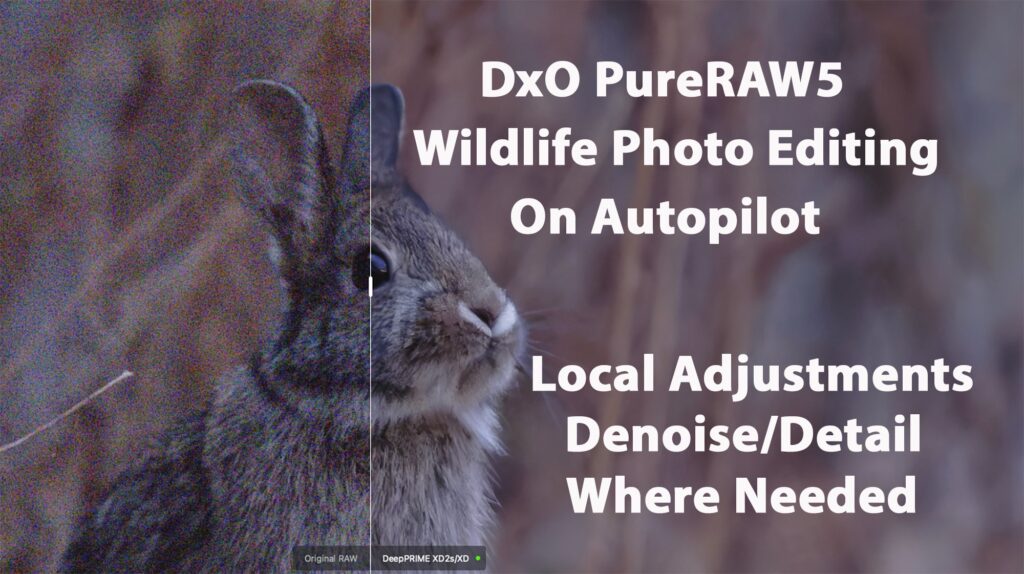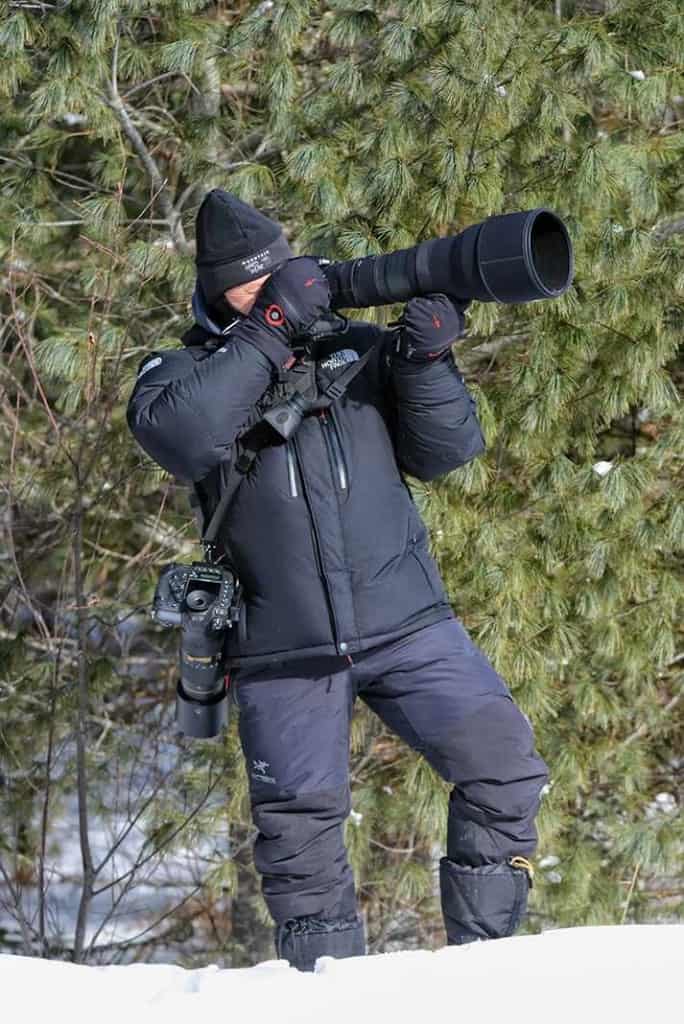
DxO PureRAW5 RAW Image Editing Perfected
What is DxO PureRAW5? DxO PureRAW 5 offers a powerful set of tools for wildlife photographers to optimize their RAW files, particularly for managing noise and enhancing detail in images,[…]
Read the post.
As a wildlife photographer I have two camera’s with me 85% of the time. Usually a long prime lens like the Nikon 600mm mounted on a Jobu gimblal head and tripod for those shots where I absolutely require the reach to the subject and a zoom lens like the Nikon 80-400 VR or 70-200 VR slung by my side for those times when the action moves in a little closer. By slung I mean with a black rapid strap which up until now was just a single strap but I recently picked up a double strap as well.
Why use a Black Rapid camera strap?
I’ve been shooting with the single Black Rapid Sport strap for two years now and it’s been a great addition, especially when a long hike is required to get to where I will be shooting. I always found the straps that went around my neck after time put a lot of pressure on my neck and became very uncomfortable over time. Many times if I was shooting with my longer lens I’d take the second camera off and just set it on the ground to give my neck a rest. But with the Black Rapid strap I found the weight distributed across my shoulder to be a lot more comfortable and I can carry it around all day without fatigue from pressure points.
Why the need for a double strap?
Fast forward to today and I decided to give the Black Rapid Yeti double strap a try. Don’t get me wrong the single Black Rapid Sport strap has served me well over the years and is great for single camera applications however I now envision myself being in situations where I will be carrying two bodies slung by side.
 Example: I’m planning to go back to Katmai National Park for another Grizzly Bear Photography tour. Last time I was in Katmai I so wished that I had an underwater camera available and handy to get right down into and below the level of the water when capturing the bears and pools of salmon. I just purchased a Nikon AW130 underwater camera that I will sling from the strap on the left and I will carry my Nikon D4s and 80-400 VR on the right hand strap. Sure one day I may pony up for an underwater housing for my DSLR but I need to convince myself that I’m going to do a lot more underwater photography before I drop $5k on a housing so this will be my first experiment.
Example: I’m planning to go back to Katmai National Park for another Grizzly Bear Photography tour. Last time I was in Katmai I so wished that I had an underwater camera available and handy to get right down into and below the level of the water when capturing the bears and pools of salmon. I just purchased a Nikon AW130 underwater camera that I will sling from the strap on the left and I will carry my Nikon D4s and 80-400 VR on the right hand strap. Sure one day I may pony up for an underwater housing for my DSLR but I need to convince myself that I’m going to do a lot more underwater photography before I drop $5k on a housing so this will be my first experiment.
Same deal when I head to the Pond Inlet Floe Edge in June 2016, I plan to have two camera’s slung around my body so I can capture Narwhal’s underwater and above where the opportunities present themselves.
Another application I envision which necessitates the dual Black Rapid Yeti strap is when I wish to bring the majesty of the landscape into my images. My second regret while in Katmai shooting the grizzlies was that I often wished I was carrying a much wider angle lens to capture images that accented the bears within the context of the landscape and glaciers. My second body on that trip was usually the Nikon 70-200 VR but it simply wasn’t wide enough to capture the ice capped mountain peaks and the bears on the tidal flats in the same frame. With the Black Raid Yeti strap I wouldn’t have to choose as I could have both wide angle and tele lenses at the ready on two camera bodies.
Changing lenses: Another great thing about having the dual strap is the changing of lenses, especially when I’m out in the field and it is muddy and wet and you can’t set one camera down. Now with both bodies attached to my body I don’t have to worry about dropping a camera or setting one down on the ground where that really is not an option due to the conditions.
Is It Comfortable?
This new Yeti double strap is very comfortable. The shoulder pads have ample padding and have a rubber underside so it stays in place better than some other straps I’ve tried. Both strap lengths are totally adjustable so you can get the cameras to sit right where you want them. I adjust my straps up to almost the shortest length so the cameras sit high up on my hip, any lower and I find they have a tendency to swing a little too much for my liking. The second reason to keep that strap short is to keep the second camera out of the dirt and the snow when you find yourself kneeling down to take photo’s.
 With this setup I can walk around with two cameras, one of those being a Nikon D4s DSLR and a Nikon 80-400 VR all day long without fatique. As a fun little side experiment, I wanted to see how the strap would do with my Nikon 600mm VRII attached to the Black Rapid Yeti and to my amazement the weight was very tolerable with a winter jacket on and it was balanced against my hip just fine as shown in the picture above. Note, I have the fastener attached to the foot of the lens NOT the camera body which would out too much strain on the camera mount. I’m not saying I’d want to carry that beast around all day but it was to know I could sling it up for a hand held session if I wanted to.
With this setup I can walk around with two cameras, one of those being a Nikon D4s DSLR and a Nikon 80-400 VR all day long without fatique. As a fun little side experiment, I wanted to see how the strap would do with my Nikon 600mm VRII attached to the Black Rapid Yeti and to my amazement the weight was very tolerable with a winter jacket on and it was balanced against my hip just fine as shown in the picture above. Note, I have the fastener attached to the foot of the lens NOT the camera body which would out too much strain on the camera mount. I’m not saying I’d want to carry that beast around all day but it was to know I could sling it up for a hand held session if I wanted to.
The trick to being ready to shoot quickly
There are two clips that sit on either side of the camera so you can limit the motion of the camera on the strap when not in use. I use the back clip fastened down so the camera can’t glide too far back behind me however I leave the front clip unfastened so the camera is free to come up to my eye without the need to unclip first before shooting. In wildlife photography a matter of seconds can mean missing an opportunity, so I always keep the front clip free moving.
If you wish to support my website and blog I’d appreciate you making your Black Rapid purchase through Cool Photography Gear.
You can check out the Black Rapid Yeti Camera strap in action through the video below.